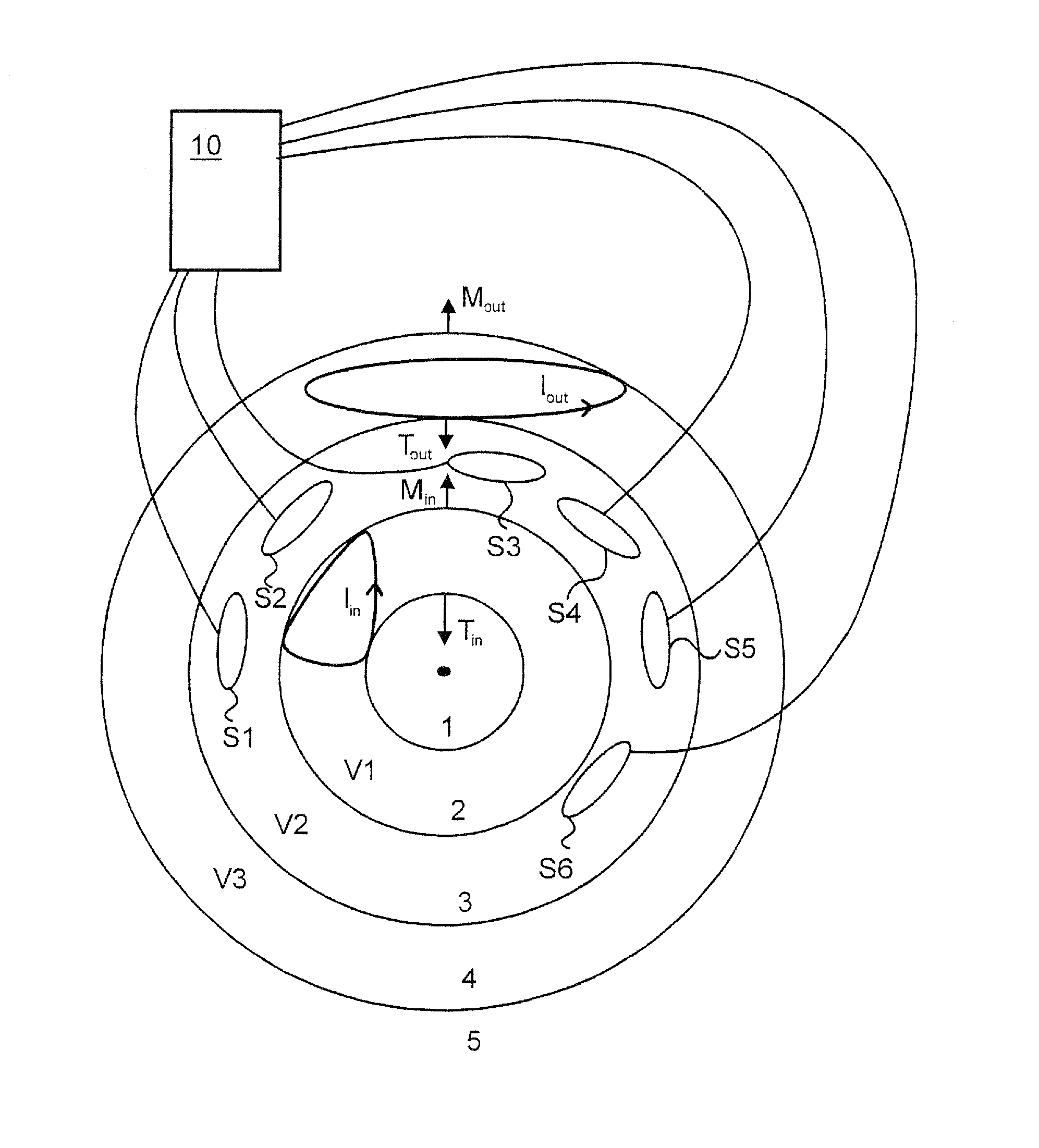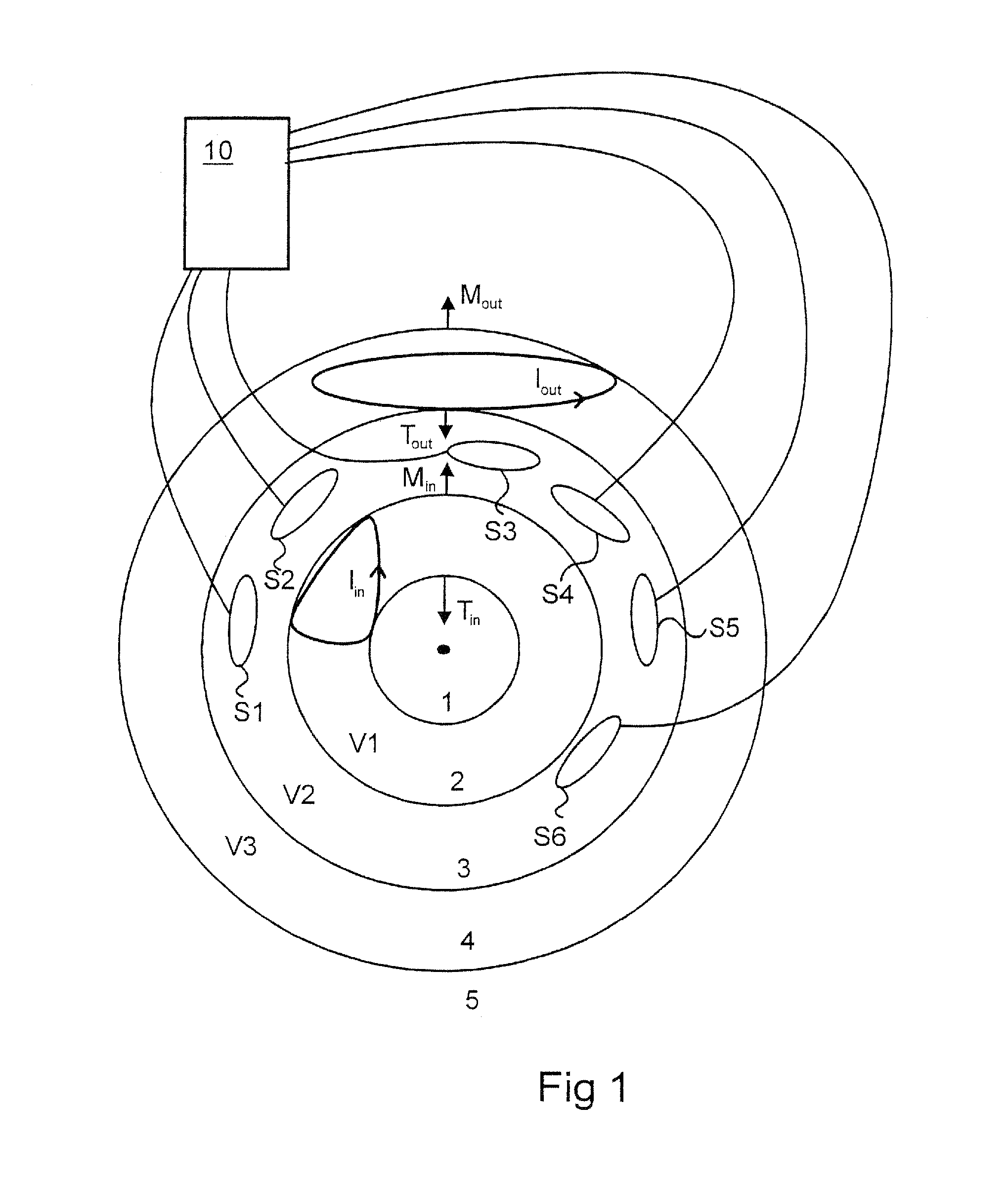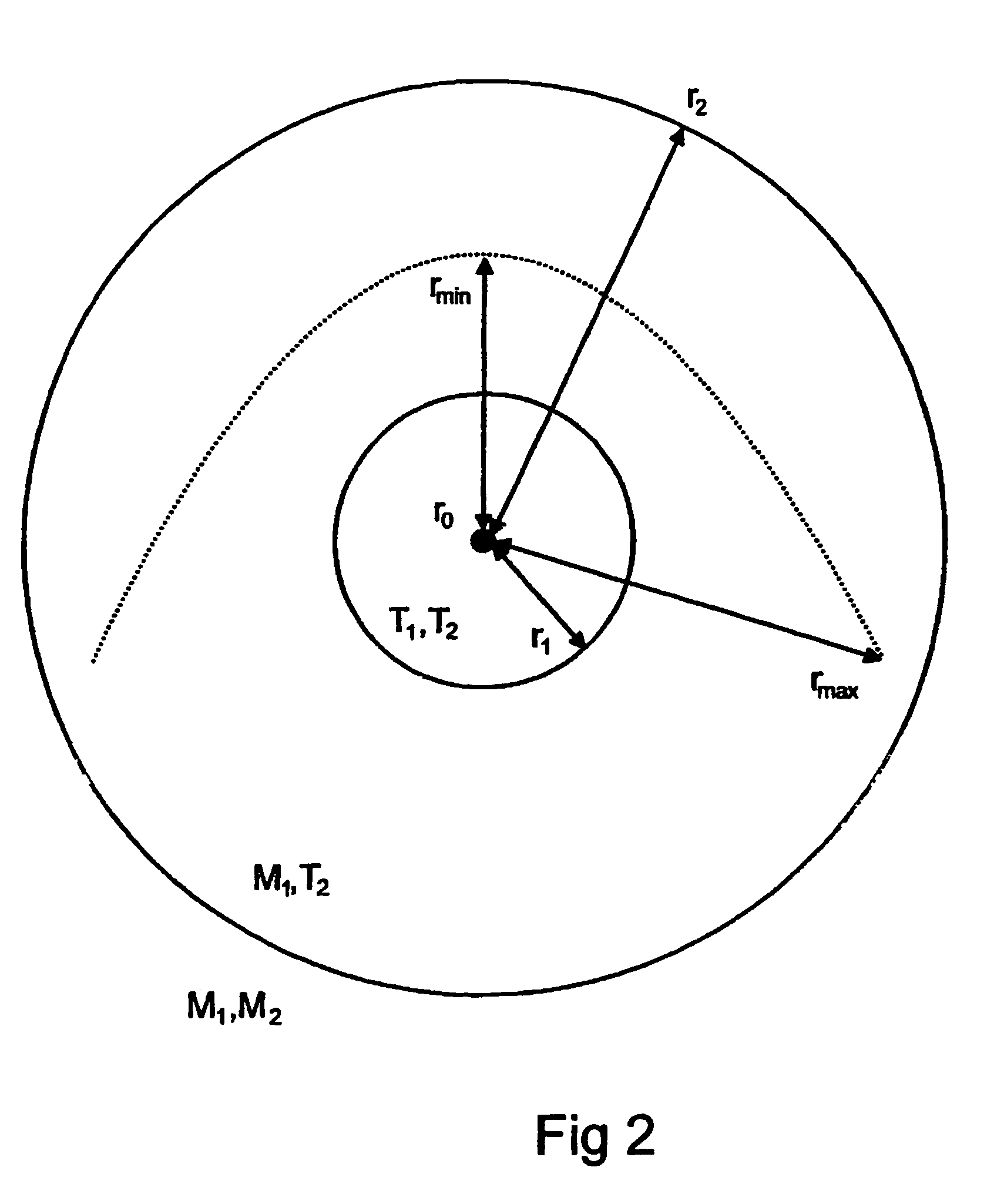[0024]Further, the method in accordance with the invention enables one to correct the signal distortions that are due to the movement of an object to be examined faster and more accurately than by previous methods, which is a basic requirement of a real-time correction for movement. The correction for movement is performed by representing the movement of an object to be examined as a movement of, the measurement sensors in the vicinity of a stationary object in such a manner that the variable geometry is taken into account when calculating the basis for signal space. In that case, the series development components corresponding to the object to be examined always are commensurable irrespective of the position of the object. The advantage of the invention is based on the fact that the calculation of the series development components requires quite few computational operations and on the fact that the external interferences are modelled when calculating the values of the series development components. Thus, this enables one to quickly calculate dependable values for the series development components corresponding to an interesting source area, although the distance and position of the object with respect to the measurement sensors would considerably vary and although the field structure of the external interferences would vary during the measurement.
[0025]Further, as the series development components describe the field produced by the sources everywhere in the measurement volume V1, they can be used to calculate a signal which would be measured by any fictitious sensor disposed in the same space. Virtual signals of this kind are useful e.g. when there is a wish to represent the signal produced by an object to be examined always in the same geometry irrespective of the fact of where the object was really situated during the measurement in relation to the measurement sensors. In addition, in virtual signals, the proportion of measurement errors is smaller than in original signals, as in the method one has attenuated the portion that is not included in the set model of an irrotational, sourceless vector field. Even in the case of virtual signals, the invention has the advantage of separating external interferences from the signals of an object to be examined.
[0026]In addition, the method in accordance with the invention enables one to identify individual sensors the signal measured by which clearly differs from the series development model that is based on the signals of the whole set of sensors. Thus, the method enables even a real-time quality control of measurement channels and an automatic rejection based on the signal analysis. In addition, the co-ordinates of the signals with respect to a basis in accordance with the invention can be re-calculated after the rejection of channels that operate in a non-desired manner, which enables one to obtain a more accurate result for the co-ordinates.
[0027]Further, thanks to the invention, the calibration of a measuring device or of a measurement geometry becomes easier than before. The calibration method in accordance with the invention does not need a predetermined calibration source, instead it suffices that the measuring device is known to measure a sourceless and irrotational vector field. Advantageously, the calibration is performed by setting the calibration coefficients and geometric parameters of the measuring device so that the measured signal vectors fit in the sub-space spanned by the signal vectors that are determined by the series developments. In other words, the calibration is performed by minimising the difference between the measured signal vectors and the sub-space calculated for the signal vectors that were produced by an irrotational vector field, in contrast to the conventional methods which minimise the difference between the signal vectors and the signal vectors produced by a source that is known beforehand as accurately as possible. In the method in accordance with the invention, as the measured signals it is possible to use e.g. any signals produced by the sources in the environment, in which case the calibration can be performed completely automatically without any preparations of the measurement situation. Furthermore, the method is more accurate and dependable than the previous ones as the inadequacy of the information concerning the geometry of an object to be measured does not result in an error of the calibration.
[0028]The invention can also be utilised in source modeling because the field components calculated irrespective of the external interferences and corresponding to the target area to be examined represent the continuous current distribution of the target area as a finite number of components so that each component describes some feature concerning the shape of a current distribution. In particular, the components can be used to check the hypotheses concerning the current distribution by comparing the modelled components to the theoretically calculated components of the distributions in accordance with the hypotheses. In some cases, this kind of comparison is easier than when using as the measurement result, the measured signal vector values, as it is done in several conventional methods. In some cases, it is possible to analytically calculate from the series development components the geometry of the current distribution without non-linear minimisation algorithms, which makes the determination of the distribution clearly faster than in the previous methods.
[0029]The invention also provides a new way of designing the geometry or set of sensors of a measuring device by optimising the capability thereof to dependably measure the series development components of an interesting object up to an order as high as possible by maximising at the same time the difference of the signal spaces associated with the object of the measuring device in question and the external interferences, such as e.g. the angle between the spaces. In this manner it is possible to obtain a set of sensors which is capable of measuring even the most complicated signals in respect of their field shapes as accurately as possible, while at the same time separating the interesting signals from the external interferences.LIST OF FIGURES
 Login to View More
Login to View More  Login to View More
Login to View More 


